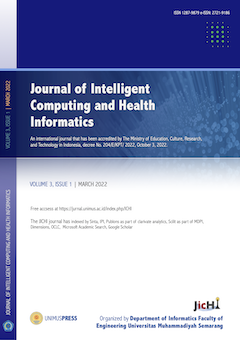New Fuzzy ServQual Build with Three Types of Fuzzy Numbers
(1) Institut Teknologi Statistika dan Bisnis Muhammadiyah Semarang
(2) Institut Teknologi Statistika dan Bisnis Muhammadiyah Semarang
(*) Corresponding Author
Abstract
Every community in the world desires optimal service quality that meets their expectations. To achieve this, it is essential to measure the level of public satisfaction with the quality of services provided by service providers. Fuzzy servqual is a method used to determine the level of service quality through survey data. The process involves calculating the value of fuzzification, defuzzification, and the GAP value between perception and expectation. This paper introduces a new approach to processing data by using three types of fuzzy numbers: shoulder fuzzy, triangle fuzzy, and trapezoidal fuzzy. The use of three types of fuzzy numbers yields different GAP calculation results compared to using only a triangular fuzzy. The results of this research show that the use of fuzzy number improvement during the fuzzyfication step leads to better GAP results with greater accuracy.
Keywords
Full Text:
PDFReferences
J. A. Goguen, “L. A. Zadeh. Fuzzy sets. Information and control, vol. 8 , pp. 338–353. - L. A. Zadeh. Similarity relations and fuzzy orderings. Information sciences, vol. 3 , pp. 177–200,” J. Symb. Log., vol. 38, no. 4, 1973.
S. Sudradjat and V. Preda, “On portfolio optimization using fuzzy decisions,” vol. 2060075, p. 2060075, 2007, doi: 10.1002/pamm.2007.
S. Kusumadewi, “Hari purnomo., 2010,” Apl. Log. Fuzzy untuk pendukung Keputusan, Graha Ilmu, Yogyakarta.
M. Wisniewski, “Using SERVQUAL to assess customer satisfaction with public sector services,” Manag. Serv. Qual., vol. 11, pp. 380–388, Dec. 2001, doi: 10.1108/EUM0000000006279.
B. Abant et al., “EVALUATION OF EXPECTED AND PERCEIVED SERVICE QUALITY IN HEALTH SERVICES WITH SERVQUAL SCALE SAĞLIK KURUMLARINDA BEKLENEN VE ALGILANAN HİZMET KALİTESİNİN SERVQUAL ÖLÇEĞİ İLE ANALİZİ,” Euroasia J. Math. Eng. Nat. Med. Sci., vol. 7, pp. 18–34, Jul. 2020.
C. Dewi, “Servqual Analysis on Samsung Libraries, Sungkyunkwan University, Korea: A Study of Tangible,” Indones. J. Librariansh., pp. 99–110, Dec. 2022, doi: 10.33701/ijolib.v3i2.2931.
V. Zeithaml, A. Parasuraman, and L. L. Berry, “Delivering quality service : balancing customer perceptions and expectations,” 1990.
R. Hapsari, M. Clemes, and D. Dean, “The impact of service quality, customer engagement and selected marketing constructs on airline passenger loyalty,” Int. J. Qual. Serv. Sci., vol. 9, pp. 21–40, Mar. 2017, doi: 10.1108/IJQSS-07-2016-0048.
T. Fandy, “Service management mewujudkan layanan prima.” Edisi, 2011.
R. Agustina, D. Suprianto, and N. Cahyo, “Analysis of Library Visitor Satisfaction Using the Servqual Method,” Indones. J. Eng. Res., vol. 1, pp. 7–13, Oct. 2020, doi: 10.11594/ijer.01.01.02.
A. Fanani, “ANALISIS KEPUASAN MAHASISWA TERHADAP PELAYANAN DI PERPUSTAKAAN UNIVERSITAS MUHAMMADIYAH GRESIK DENGAN METODE SERVQUAL TERINTEGRASI DENGAN IMPROVEMENT GAP ANALYSIS (IGA),” JUSTI (Jurnal Sist. dan Tek. Ind. Vol 2 No 2 justi, 2022, doi: 10.30587/justicb.v2i2.3317.
R. Hapsari, A. Seftiawan, and U. Umanah, “Servqual Analysis on Merangin Public Library Services, Jambi Province,” Indones. J. Librariansh., pp. 95–105, Jan. 2021, doi: 10.33701/ijolib.v1i2.1119.
A. Jonkisz, P. Karniej, and D. Krasowska, “The Servqual Method as an Assessment Tool of the Quality of Medical Services in Selected Asian Countries,” International Journal of Environmental Research and Public Health, vol. 19, no. 13. 2022. doi: 10.3390/ijerph19137831.
S.-J. Lu et al., “Identification of quality gaps in healthcare services using the SERVQUAL instrument and importance-performance analysis in medical intensive care: a prospective study at a medical center in Taiwan,” BMC Health Serv. Res., vol. 20, no. 1, p. 908, 2020, doi: 10.1186/s12913-020-05764-8.
L. Yuliana and F. Khusnullaili, “Analisis Kualitas Layanan Perpustakaan Alternatif Wilayah Selatan Kota Yogyakarta Dengan Model Servqual,” AL Maktab., vol. 5, p. 118, Dec. 2020, doi: 10.29300/mkt.v5i2.3530.
H. Harinoto, “DIMENSI SERVICE QUALITY DAN KEPUASAN WAJIB PAJAK PBB DI KABUPATEN MALANG,” J. Ekon. Mod., vol. 11, p. 167, Oct. 2015, doi: 10.21067/jem.v11i3.1093.
Budi Harto, “ANALISIS TINGKAT KEPUASAN PELANGGAN DENGAN PENDEKATAN FUZZY SERVQUAL DALAM UPAYA PENINGKATAN KUALITAS PELAYANAN (Studi Kasus Di Bengkel Resmi BAJAJ Padang),” J. Teknoif Tek. Inform. Inst. Teknol. Padang, vol. 3, no. 1 SE-Article, pp. 20–30, Apr. 2015, doi: 10.21063/jtif.2015.V3.1.20-30.
R. T. C. Melnyk, S.A., & Christensen, Back to Basics: Your Guide to Manufacturing Excellence (1st ed.).
Article Metrics
Abstract view : 445 timesPDF - 80 times
DOI: https://doi.org/10.26714/jichi.v3i2.11637
Refbacks
- There are currently no refbacks.
____________________________________________________________________________
Journal of Intelligent Computing and Health Informatics (JICHI)
ISSN 2715-6923 (print) | 2721-9186 (online)
Organized by
Department of Informatics
Faculty of Engineering
Universitas Muhammadiyah Semarang
W : https://jurnal.unimus.ac.id/index.php/ICHI
E : jichi.informatika@unimus.ac.id, ahmadilham@unimus.ac.id
This work is licensed under a Creative Commons Attribution-ShareAlike 4.0 International License.









